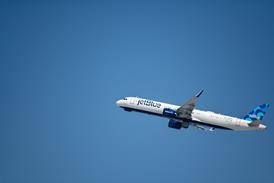The USA remains at a "high risk of a catastrophic runway collision" and the runway safety organization within the Federal Aviation Administration (FAA) "has not been fulfilling its mission to co-ordinate and lead the agency's runway safety efforts." the US Government Accountability Office (GAO) says in a new report.
Investigators involved in the year-long study, requested by House of Representatives aviation subcommittee chairman Jerry Costello and Senate member Frank Lautenberg, reviewed runway and ramp incident records in government databases and spoke to industry officials including pilots, air traffic controllers, ramp workers and experts selected with help from the National Academy of Sciences.
Chief among the findings is that co-ordination and leadership issues within the FAA, technology challenges, a lack of data and human factors-related issues are impeding progress in reducing the rate of incursions. The GAO notes that the preliminary rate for all categories of incursions in fiscal year 2007 was 6.05 incursions per 1 million air traffic control operations, 12% higher than in 2006 and almost as high as the peak incursion rate of 6.1 generated in 2001. The FAA says the numbers are higher because more pilots and controllers are reporting the errors due to an increased emphasis on the topic of late.
The most serious incidents, so called "A" and "B" incursions, peaked at more than 50 in 2001 but have been averaging about 30 per year since, with 24 logged in 2007, down from 31 in fiscal 2006. There has been an average of nine serious incursions per year since 2002 involving at least one commercial aircraft, the report states.
GAO links a dearth of progress to "an absence of co-ordination and national leadership" within the FAA's Runway Safety Office, an entity required by FAA order to perform those functions. Though the FAA in August hired a permanent director for the office, Wes Timmons, the GAO notes that there had been no permanent director for the previous two years and the staff had been reduced by 45% over the past four years, from 66 in 2003 down to 37 in May 2007, in part because contractor funding had been decreased from $4 million per year to $2.5 million per year in the same timeframe.
In its defence, the FAA says its incursion prevention efforts have resulted in a decrease in category A and B incursions of 55% since 2001. The agency in August rekindled its efforts with industry, launching a runway safety "call to action" that among other efforts included comprehensive reviews of safety issues at problem airports, rollout of new high-contrast taxiway centrelines near runway intersections, reviewing procedures for issuing taxiing clearance, and setting up a non-punitive incident reporting system with air traffic controllers, a deal the controllers have not yet agreed to.
Source: Flight International























